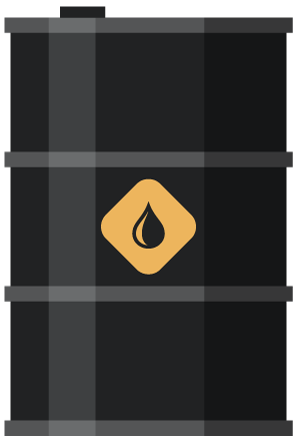CFD Trading
Contracts for difference (CFDs) offer a flexible and accessible way to trade diverse markets, including stocks, indices, commodities, currencies and more – all without owning the underlying assets on our award-winning platform.
.gif)
.gif)
Popular Instruments in CFD Trading:




.png)
Pricing delayed by 5 minutes. Check our trading platform for real-time pricing.
What’s the Difference Between CFDs and Share Trading?
The primary distinctions between CFD trading and traditional share trading include:
Ownership:
With CFDs, you do not actually own the underlying asset, whereas in share trading, you own the stock.
Leverage:
CFD trading allows for greater leverage, meaning you can control larger positions with a smaller amount of capital, while share trading typically requires you to pay the total asset price upfront.
Short Selling:
CFD trading makes short selling more accessible and straightforward. In contrast, short selling in traditional share trading can be more complicated and may not always be available.
Cost-Efficient:
CFD trading typically has lower transaction costs. This, combined with the benefits of leverage, can make CFDs a cost-efficient way to trade various markets compared to share trading.
Benefits of CFD Trading
Trade on Margin
Profit in Both Rising and Falling Markets
Access to Multiple Markets
Cost-Efficient
Trade on Margin
CFDs offer leverage, meaning you only need to deposit a small percentage of the trade's total value. This amplifies your potential returns and market exposure. But it is important to remember that losses are also magnified, so it is essential to apply appropriate money-management techniques
Profit in Both Rising and Falling Markets
CFDs offer traders the flexibility to profit in both bullish and bearish markets. Whether prices are climbing or falling, you can position yourself to capitalize by going long or short. This ability to profit in either market direction sets CFDs apart from traditional forms of investing, which often only benefit from rising markets.
Access to Multiple Markets
CFD trading provides access to a diverse range of global markets. From stocks, indices to commodities and currencies, traders can diversify their portfolios and seize opportunities across multiple asset classes. These markets are available from a single trading platform, offering convenience and efficiency in managing trades.
Cost-Efficient
Compared to traditional forms of trading, CFD trading often comes with lower transaction costs. The cost structure makes CFDs an appealing option, particularly for those looking to make frequent trades while keeping costs manageable.
Elevate your trading experience with
Century Trader App
Elevate your trading experience with
Century Trader App

What Markets Can You Trade with CFDs?
How to Trade CFDs
To get started with CFD trading, follow these steps:
Why Trade with Century Financial
35+ Years of excellence
Choose a trusted broker that server over 50,000 clients only in UAE.
Regulated by SCA
Century Financial Consultancy LLC is fully regulated and licensd by the Securities and Commodities Authority in UAE.
Trade your Style
Trade on your preferred MT5, CQG, TWS, and the most intuitive Century Trader.
100+ Industry awards
Trade with a broker that has been repeatedly recognized for the quality of its services.
24/5 Support
Take advantage of our dedicated customer support for helping our clients 24 x 5 days.
Enhanced insurance upto
US$ 2M per client
Trade with confidence, and receive additional protection for your funds, with comprehensive insurance coverage of up to US$2 million per client, in the unlikely event that we become insolvent.
Frequently Asked Questions (FAQs)
Is CFD Trading for You?
CFD trading might be suitable if you understand financial markets well and are comfortable with the risks associated with leveraged trading. It’s essential to have a well-thought-out trading plan and the discipline to manage risk effectively. However, be mindful that CFD trading carries significant risk, and losses can sometimes exceed your initial investment. Always assess your financial situation and risk tolerance before diving into CFDs.
Which Assets Can I Trade As CFDs?
CFDs let traders speculate on the price movements of different assets, such as company shares, ETFs, stock indices, commodities, and treasury bonds.
Are CFDs Traded Using Leverage?
CFDs use leverage, meaning you only need to put down a small portion of the total trade value to open a position, giving you exposure to a much larger amount of money.
How Can I Trade CFDs With Century Financial?
Century Financial allows you to trade over 10,000 instruments. Decide whether you want to go long (place a buy trade) or short (place a sell trade) based on whether you expect prices to rise or fall; choose your trade size; place your trade; and monitor your position.
How Do I Manage Risk When Trading CFDs?
Risk management is crucial in CFD trading. Use tools like stop-loss orders, take-profit orders, and limit orders to manage risk. It's also important to trade within your financial means and have a clear trading plan.
Can I Receive Dividends With CFDs?
In CFD trading, dividends are called price adjustments. If you hold a long position when a company announces dividends, you receive a payment. However, if you hold a short position, the same amount is deducted from your account.
هل أنت مستعد للاستثمار؟
استكشف تجربة تداول جديدة مع
تطبيق سنشري تريدر
يمكن أن تتجاوز الخسائر قيمة إيداعاتك
هل أنت مستعد للاستثمار؟
استكشف تجربة تداول جديدة مع
تطبيق سنشري تريدر
يمكن أن تتجاوز الخسائر قيمة ودائعك
.png)
.png)
.png)
.png)
.png)
















